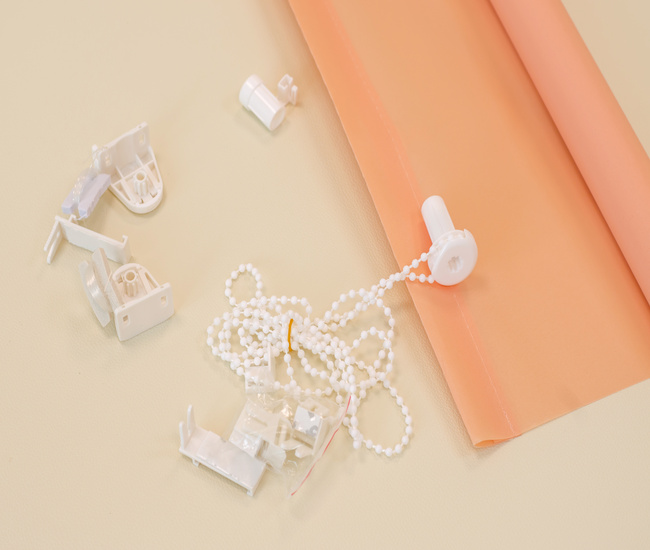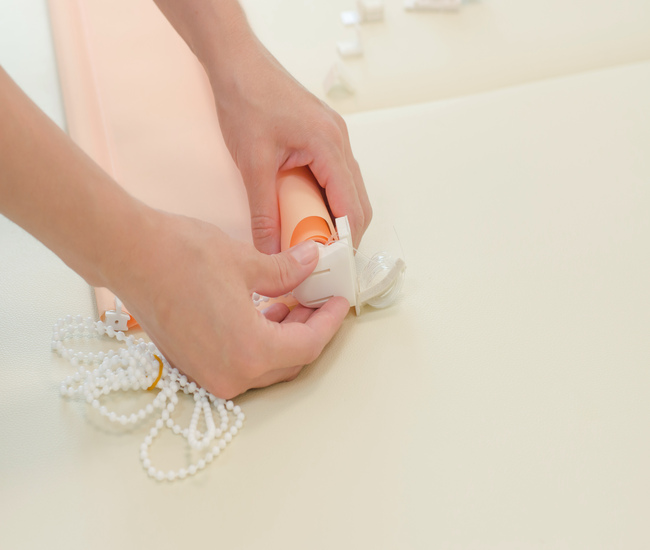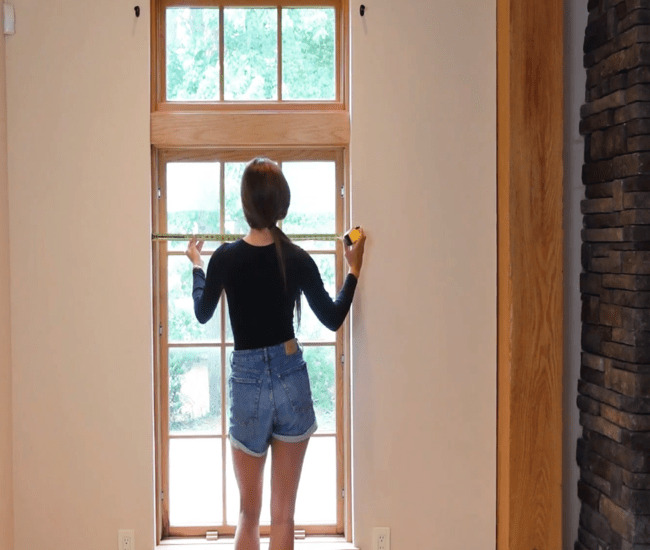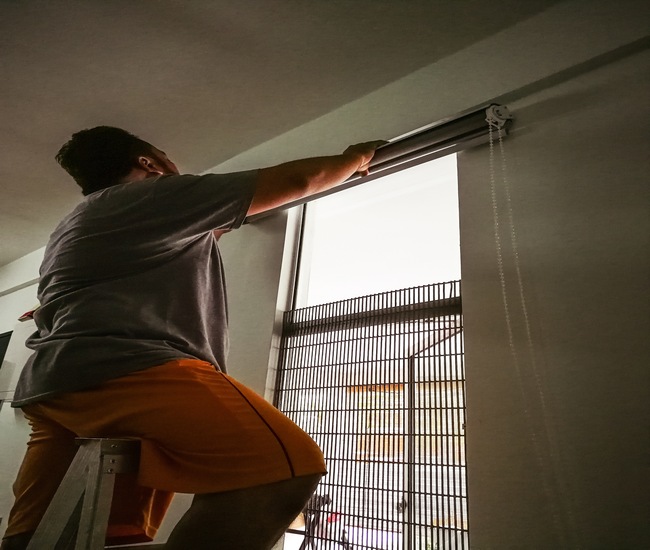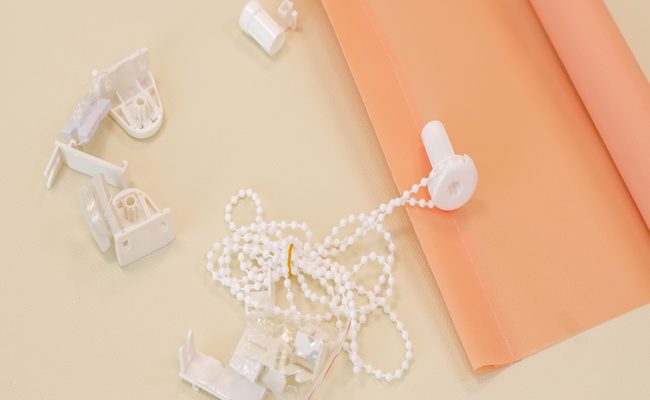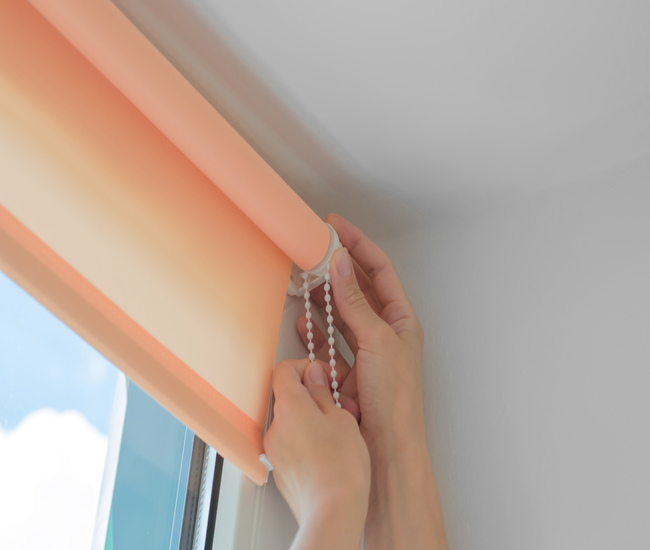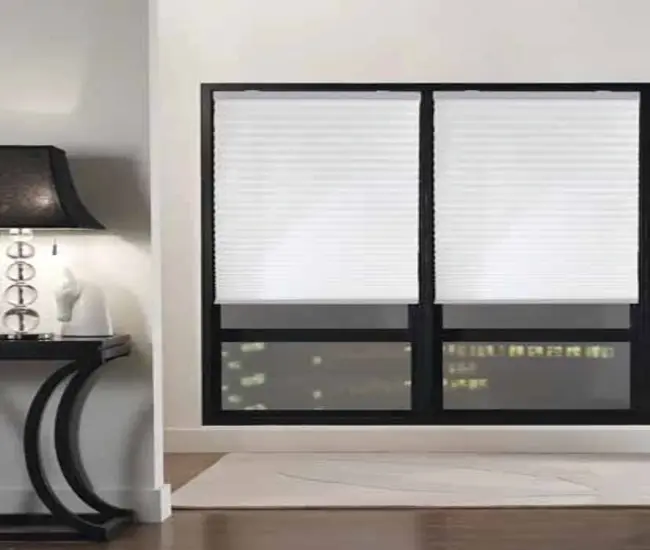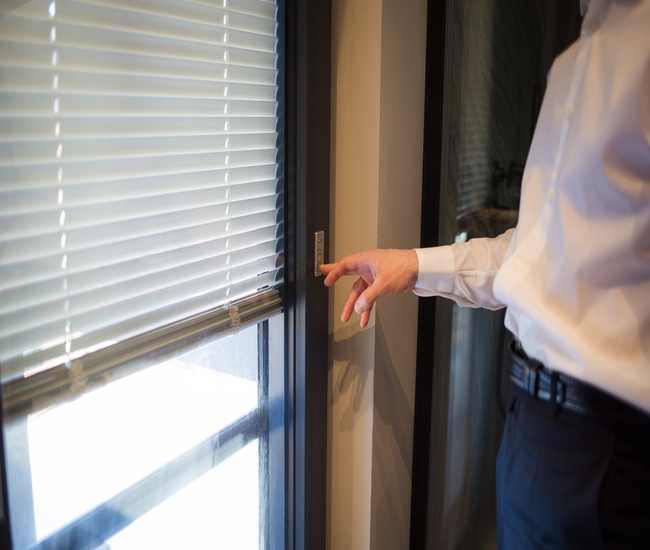Do your spring-loaded roller blinds not go up all the way or not go up at all? It might be due to not enough tension on the internal spring. Just tighten the spring tension on your roller blinds, and they will start rolling all the way up and down.
You’ll also need to adjust the spring on a roller blind if it experiences uneven tension or produces noise. A quick tip to restore the quiet, smooth operation of your roller blind is to pull it down halfway, then remove it from the brackets, roll the shade up by hand, and reinstall it.
The spring is typically housed in a hollow roller tube and is tensioned to offer the necessary force for the proper functioning of the blind. When a spring-loaded blind is pulled down, the spring is stretched, storing potential energy.
This energy is released when the shade is released, causing the spring to contract and roll up the fabric.
You can adjust the tension of the spring to control the speed and resistance of the blind’s movement.
Scroll on to learn some easy tips on how to fix spring-tensioned roller blinds.
How Does a Spring Loaded Blind Work?
A spring-loaded roller blind is a roll-up window treatment powered by a coiled spring inside a hollow top tube, which works by means of a tensioned clutch mechanism. The tensioned clutch mechanism locks the fabric in place when engaged, and it can be released by pulling gently on the blind to lower or raise it to the desired level.
A spring is a crucial component of your roller blind with a spring-powered lift mechanism. The spring system of a roller blind ensures smooth and controlled operation, allowing it to be easily rolled up or down.
The spring mechanism that holds tension on the fabric also contains a number of ball bearings that drop into slots, as you operate the blind. As a result, you can pull the roller blind down or push it up and stop it every few cm as you wish.
As you pull down on the roller, the tension increases on the spring so the shade stays in place. Occasionally, the spring may uncoil and lose tension, so it won’t work right. You can restore your roller’s operation by simply adjusting the spring.
Understanding how to adjust the spring tension on your roller blind is essential to ensure optimal functionality and longevity. You can adjust or readjust the spring by loosening or tightening it, or by ensuring its perfect alignment.
Types of Spring-Powered Mechanisms on a Roller Blind
There are two types of spring-powered control mechanisms on a roller blind, constant force spring lift and slow rise spring lift.
Constant Force Spring Lift System
This type of spring lift mechanism on a roller blind uses a coiled spring that is installed inside the roller tube of the window covering.
The coiled spring is tensioned and exerts a constant force on the window shade, allowing it to be easily raised, lowered, or adjusted.
How to Adjust Force of Spring
The force of the spring can be adjusted or fixed by changing the size or tension of the spring, providing control over your blind’s movement. Constant force spring lifts are known for their smooth working and ability to hold the window blind in any desired position.
Slow-Rise Spring Lift
A slow-rise spring lift, also known as a controlled speed spring lift, uses a specialized mechanism that regulates the speed at which the blind is rolled up and down, or adjusted.
The spring used in this mechanism provides a controlled and gradual movement, preventing the blind from rapidly snapping open or closed.
Cordless slow-rise spring lift systems are CPSC-approved for households with young children or pets.
Types of Roller Blind Springs
There are two main types of springs used in your roller blinds: tension springs and torsion springs.
Tension springs are commonly found in standard roller shades and provide the necessary tension to hold the window treatment in place when fully extended.
Torsion springs, on the other hand, are usually used in cassette or enclosed roller blind systems and offer enhanced control over the blind’s movement.
Tension Springs
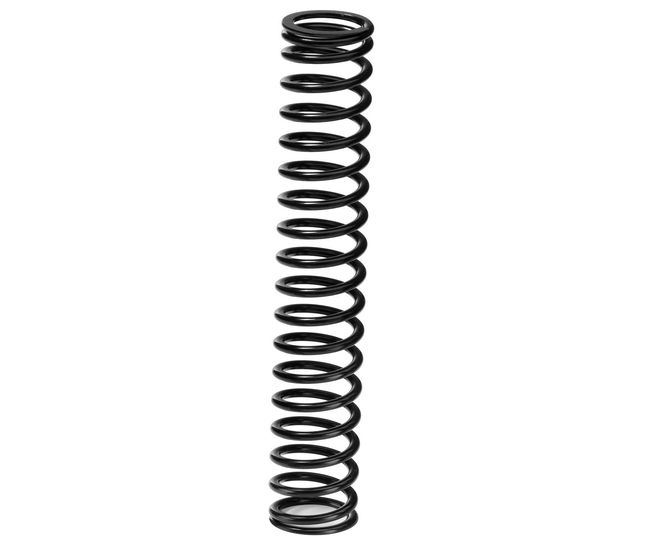
These are coiled springs that are attached to a bracket or pin at one end and to the roller tube at the other end.
When adjusting the tension of a tension spring system, you can increase or decrease the spring’s tightness to achieve the desired resistance when rolling up or pulling down the blind.
Torsion Springs
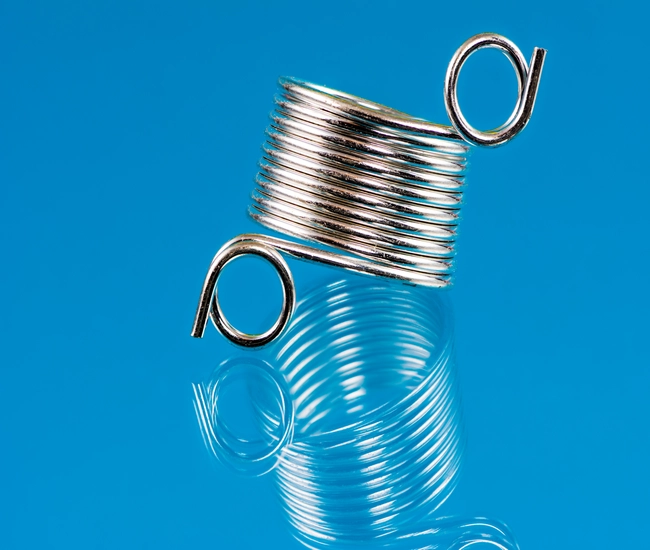
As the name suggests, these springs work based on torsion or twisting force. They are placed inside a metal tube that is attached to the roller blind set.
Adjusting torsion springs involves tightening or loosening the spring’s tension by rotating the metal tube.
Pre-Steps to Adjust Roller Blind Springs
To adjust the spring on a roller blind, follow these step-by-step instructions:
Step 1: Identify the Type of Spring System
Determine whether your roller window treatment has a tension spring or a torsion spring mechanism. This information will guide you in the adjustment process.
Step 2: Gather Tools You’ll Need

Depending on the type of spring and design of the roller mechanism, you may need:
- A flathead screwdriver
- An Allen wrench
- A pair of pliers
How to Make Adjustments in Tension Spring
There are different ways to increase or decrease the tension in the spring.
To Increase Spring Tension
Locate the spring tension adjustment mechanism of your blinds, which is usually a small screw or a pin. Turn the screws clockwise or insert the pin into a higher hole to tighten the spring.
To Decrease Spring Tension
Rotate the screw counterclockwise or insert the pin into a lower hole to release some of the roller blind spring’s tension.
How to Adjust Torsion Spring
Step 1: Loosen the Locking Mechanism
Locate a set screw or a locking knob on the metal tube that houses the torsion spring. Loosen the screw or knob to allow for proper adjustments.
Step 2: Rotate the Metal Tube
Depending on the desired adjustment level, either rotate the tube clockwise to increase tension or counterclockwise to decrease its tension.
Step 3: Secure the Locking Mechanism
Once you achieve the desired tension in the spring, tighten the set screw or locking knob to secure the position of the metal tube.
Make gradual adjustments, testing the roller blind’s movement after each modification. This will allow you to fine-tune the tension until it suits your preference.
How to Fix Roller Blind Spring Issues
When adjusting roller blind springs, you may encounter common problems that affect their performance. Here are some troubleshooting tips:
How to Fix Uneven Rolling

If your roller blind unevenly rolls up or pulls to one side, it may indicate an imbalance in the spring tension.
Revisit the adjustment steps for the springs and ensure both sides of the blind have similar tension.
Spring Replacement
Over time, spring mechanisms can wear out or lose their elasticity. If adjusting the spring tension doesn’t resolve the issue with the operation of your blinds, you may need to replace the spring.
Contact the manufacturer of your product or a professional to obtain the correct replacement spring and follow their instructions for installation.
Professional Assistance

If you’re unsure about adjusting the spring or encounter more complex issues, you should seek professional assistance. They have the required expertise and tools to diagnose and resolve roller blind spring problems effectively.
Summing up, knowing how to adjust the spring on a roller blind empowers you to customize the blind’s tension according to your needs.
By understanding the various types of roller blind springs and following the step-by-step guide, you can ensure smooth rolling up and down and prolong the lifespan of your roller blinds.
FAQs
How do you tighten the spring on a roller blind?
If your roller blind doesn’t roll up, the spring tension may be too loose. To tight the spring, follow these steps:
Step 1: Pull the roller blind out of the window.
Step 2: Roll the blind by hand and put it back in the windows.
Step 3: Test the spring tightness.
Step 4: If the spring is still too loose, repeat this process until the desired amount of tightness (tension) is attained.
How do you loosen the spring on a roller blind?
If your roller blind is having a hard time staying down or rolls up too fast, it means its spring tension is too high. To fix this issue, here are some easy DIY steps:
Step 1: Pull the roller blind out of the window.
Step 2: Roll it down about 18 inches (1.5 ft) by hand.
Step 3: Put the blind back in the window.
Step 4: Test the tension.
Step 5: Repeat this process until the desired amount of tension is attained.
How do you reset the spring on a roller shade?
If the spring on a roller blind is too tight, you can reset it by following these steps:
Step 1: Roll up the fabric.
Step 2: Remove the roller from the brackets.
Step 3: Unroll the window treatment about halfway by hand.
Step 4: Replace the roller in the brackets.
Step 5: Test if the spring has been reset.
Step 6: Repeat the process until the right amount of tension is achieved.
How do you adjust the tension on roller shades?
Has your roller shade lost its tension? It’s super easy to fix it:
Step 1: Take your shade out of the window and place it on a flat surface, such as a table top.
Step 2: Pull the end caps off the cassette. You’ll see a little dial on both ends of the shade.
Step 3: Turn the dial using a flat head screwdriver. You’ll see the spring inside the roller tightening as you turn it.
Step 4: Tighten both sides to make sure tension is even on both sides of the roller shade.
Step 5: Test the spring tension by lowering and raising it by your hand.
Step 6: Repeat and adjust the spring until you get the desired amount of tension.
Need Further Assistance?
Still unsure how to tighten, loosen, balance, or realign spring on a roller blind to ensure smoother, quieter rolling up and down? Contact our professionals using 24/7 live chat or give us a ring at (800) 863-6109 for expert advice and custom solutions.



